The collaborative Cottonwood Creek Daylighting project is picking up momentum. The creek design shaping up and a new generation of Black Cottonwood trees are growing.This ambitious project will move Cottonwood Creek out of the buried flume where it has flowed for decades into an engineered creek channel on the east end of Julia Davis Park. Fish and birds will benefit, and visitors will enjoy the beauty of the small intermittent creek as it meanders through the park.
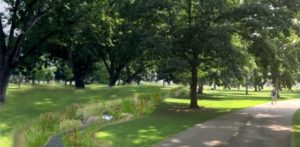
Artist rendering of the new channel for Cottonwood Creek provided by Ecosystem Sciences Foundation
Creek Design Taking Shape
The City of Boise is working with engineers to design the new creek and secure necessary permits. The placement of the new creek channel allows room for The Cabin to be located nearby, if the City decides to move it from its current location by the Boise Library. BREN Chairman Mike Homza said, “The possible relocation of The Cabin to our project area fell out of the sky like in the Wizard of Oz, but all parties are working well together to ensure this is a win-win-win.”
Once built, the new channel will need to be landscaped with native plants to maximize the benefit to local birds like Western Tanagers and Great Horned Owls and other wildlife. Black Cottonwood trees are the only large tree native to the Boise River, and native birds and wildlife are highly dependent on them for food and shelter. Buying Black Cottonwood trees is expensive and trees available on the market are not grown from the seed of Boise River trees. BREN and partners decided to try our hand at growing Black Cottonwood from seed. With the help of enthusiastic volunteers, we’ve gotten off to a strong start.
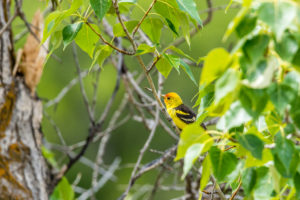
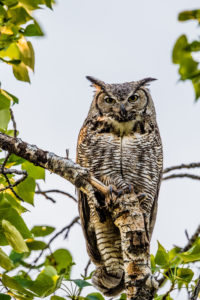
Left: Western Tanager
Right: Great Horned Owl
Photos: Ken Miracle
We’re Growing Black Cottonwood Trees
BREN, City of Boise Parks and Recreation, Golden Eagle Audubon Society, Ted Trueblood Chapter Trout Unlimited and Land Trust of the Treasure Valley hosted two workshops to teach volunteers how to grow Black Cottonwood trees from seed. With help from local expert Dr. Rob Tiedemann, volunteers received a lesson on Black Cottonwood reproduction on May 29. Volunteers then helped fill containers with soil to be ready for planting.
Timing is Everything
Timing is everything when it comes to growing Black Cottonwoods – the tiny seeds don’t last long once they mature. We relied on expert opinion and best judgement to schedule a day to collect and plant. By June 15, the ground was covered in shed seeds. Had we waited too long?
With a boost provided by coffee donated by Starbucks, volunteers gathered seeds from trees by the river near Marden Lane. Some volunteers brought seeds gathered from trees near their homes too. Seeds were gathered from different trees and different heights on the trees, and everything was carefully labeled. The action then moved to the City’s Laura Moore Cunningham Arboretum. With clear instructions on how to plant the seeds, the volunteers planted 319 containers. Everyone went home wondering if we’d done it right, if anything was going to grow. Luckily, we didn’t have to wait long.
The Summer Solstice Surprise
A close look on June 21 revealed tiny green leaves had appeared. That was great news, but the best news was that seeds from every tree had germinated. Growing trees from seeds has a clear genetic advantage over taking stakes or depending on runners from existing trees, and, if all keeps going well, the new Cottonwood Creek will have a healthy diversity of native Black Cottonwood. BREN and our partners will continue to involve volunteers in taking care of these trees – they likely won’t be ready for planting at Cottonwood Creek until 2021. Watch our email and Facebook for opportunities to participate.
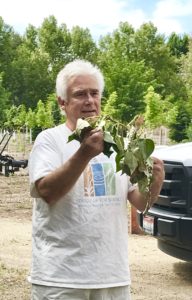
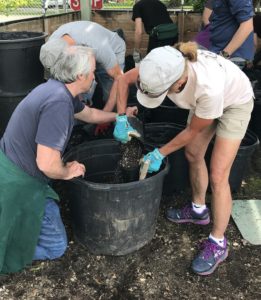
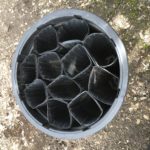
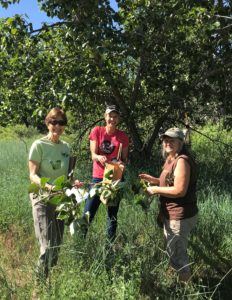
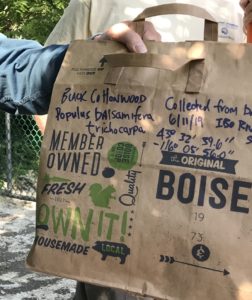
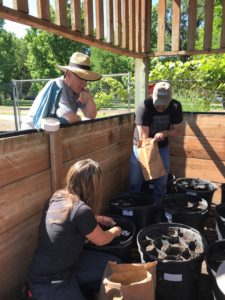
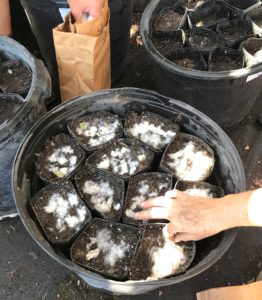
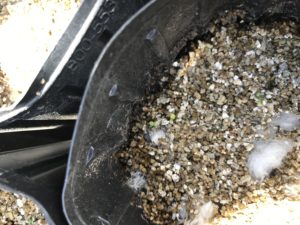
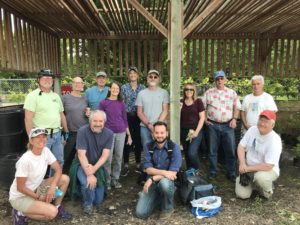
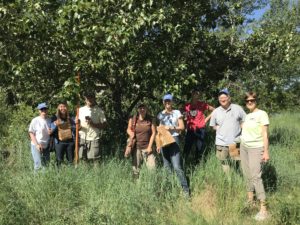
Photos from top left: Dr. Rob Tiedemann explains how Black Cottonwood seeds develop, volunteers fill planting containers, empty planting containers, volunteers cut seeds pods from trees, seeds are labeled, Project Manager Andy Brunelle oversees the planting, seeds are laid on top of the soil, seedlings emerge, May 29 volunteers, one of two teams of June 15 volunteers
Cottonwood Creek’s Tumultuous Past
Learn about the tumultuous history of the City of Boise and Cottonwood Creek, the origins of the flume, examine maps of the Cottonwood Creek watershed and the route of the flume through East Boise, and discover how the wet winter of 2019 impacted Cottonwood Creek by visiting BREN’s Cottonwood Creek project page.
The Boise River Enhancement Network is a partner in a cooperative project to daylight Cottonwood Creek where it flows through Julia Davis Park and enters the Boise River. The creek currently runs through a stone flume under the park. A new natural creek channel will be constructed benefiting fish and wildlife, water quality and park visitors. The project leads are City of Boise and Trout Unlimited and partners include the Intermountain Bird Observatory, Ada County Highway District, Golden Eagle Audubon Society and Land Trust of the Treasure Valley. The project is funded, in part, by the US Bureau of Reclamation, the City of Boise Open Space and Clean Water Fund and the Idaho Foundation for Fish and Wildlife.